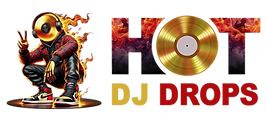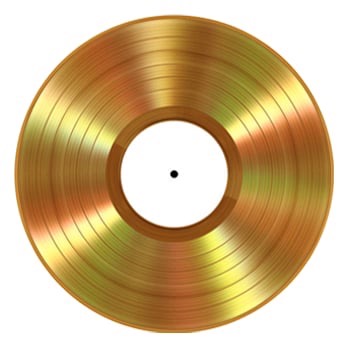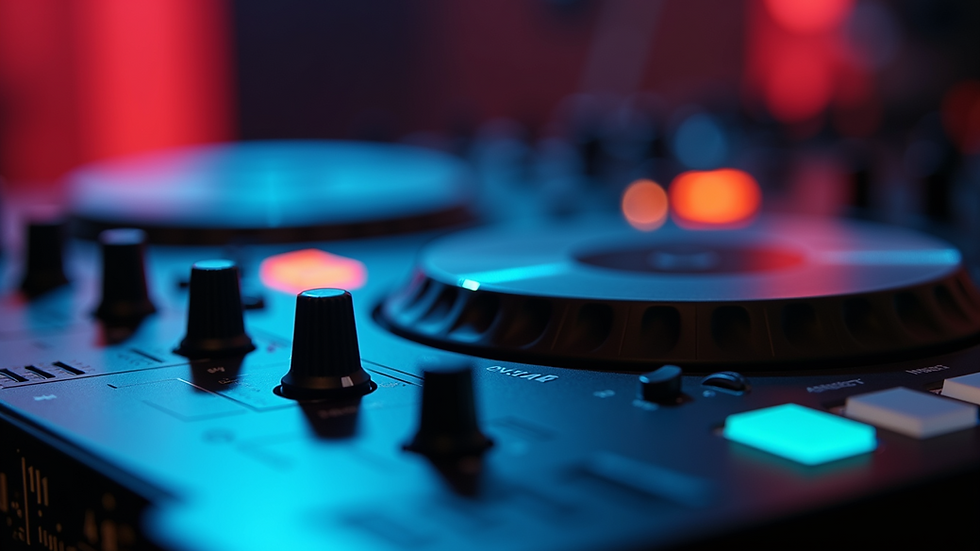Enhance Your DJ Sets with Sound Effects
- Hot DJ Drops
- 3 days ago
- 4 min read
When it comes to creating an unforgettable DJ set, the music selection is just the beginning. Adding sound effects can elevate your performance, making it more dynamic and engaging. These effects help you build energy, create transitions, and captivate your audience. Whether you are spinning at a club, festival, or private event, mastering the use of sound effects can set you apart from other DJs.
Sound effects are not just random noises; they are tools that add texture and excitement to your mixes. From subtle sweeps to explosive drops, the right effect at the right moment can transform a good set into a great one. This article will guide you through the benefits of using sound effects, practical tips on how to incorporate them, where to find quality sounds, and how to use them creatively.
The Power of Using DJ Sound Effects in Your Sets
Using sound effects in your DJ sets can dramatically change the atmosphere and energy of your performance. Here are some key reasons why you should consider integrating them:
Enhance Transitions: Smooth out or spice up transitions between tracks with effects like risers, sweeps, and echoes.
Build Anticipation: Use effects to create tension before a drop or a big moment in your set.
Add Personality: Customize your sound and style by choosing effects that reflect your unique vibe.
Engage the Crowd: Catch the audience’s attention with unexpected sounds that keep them hooked.
Fill Gaps: Cover up any awkward silences or mismatched beats with creative sound layers.
For example, a well-timed white noise sweep can signal a change in energy, while a vocal shout or siren can hype up the crowd. Experimenting with different effects will help you discover what works best for your style and the type of events you play.

How to Effectively Use Sound Effects in Your DJ Sets
Incorporating sound effects requires more than just pressing buttons randomly. Here are some practical tips to help you use them effectively:
Plan Your Effects: Know when and where to use effects during your set. Avoid overusing them, which can overwhelm the music.
Match the Mood: Choose effects that complement the genre and vibe of your tracks.
Use Effects Sparingly: Less is more. Use effects to highlight key moments rather than throughout the entire set.
Practice Timing: Perfect your timing to ensure effects enhance rather than disrupt the flow.
Layer Effects: Combine multiple effects like reverb and delay for richer soundscapes.
Use Effects for Transitions: Effects like echoes or filters can smooth out transitions between songs.
Experiment Live: Don’t be afraid to try new effects during your performance to see how the crowd reacts.
For instance, during a build-up, adding a rising pitch effect can increase excitement. When dropping into a new track, a quick echo or beat repeat can add flair. Always listen carefully to how the effects blend with your music.
Where can I find DJ sound effects?
Finding high-quality sound effects is crucial for professional-sounding sets. There are many sources where you can get a wide variety of effects:
Online Marketplaces: Websites like Hot DJ Drops offer extensive libraries of ready-to-use sound effects tailored for DJs.
Sample Packs: Many producers release sample packs that include sound effects suitable for different genres.
Create Your Own: Use software like Ableton Live or FL Studio to design custom effects.
Free Resources: Some websites provide free sound effects, but quality and uniqueness may vary.
DJ Software Libraries: Many DJ programs come with built-in effects and samples.
When choosing effects, look for clear, high-quality sounds that fit your style. Avoid overly common or generic effects to keep your sets fresh and unique.

Creative Ways to Incorporate Sound Effects in Your Performances
To truly stand out, think beyond basic effects and explore creative uses:
Layer with Vocals: Add vocal chops or shouts to energize the crowd.
Use Effects as Instruments: Treat effects like instruments by triggering them rhythmically.
Build Signature Sounds: Develop a unique set of effects that become your trademark.
Interactive Effects: Engage the audience by using call-and-response effects or crowd noise samples.
Dynamic Volume Control: Automate effect volume to create smooth rises and falls.
Sync Effects to BPM: Match effects timing to the beat for seamless integration.
For example, you can use a siren effect to signal a change in the set or a robotic voice effect to introduce a new track. Combining effects with loops and samples can create complex soundscapes that keep your audience hooked.
Tips for Maintaining Balance and Professionalism
While sound effects can enhance your set, it’s important to maintain balance and professionalism:
Avoid Overuse: Too many effects can distract or annoy listeners.
Keep It Relevant: Use effects that fit the music and event atmosphere.
Test Your Setup: Check how effects sound on different sound systems.
Stay in Control: Use effects intentionally, not randomly.
Practice Regularly: Familiarity with your effects will improve your timing and creativity.
Remember, the goal is to complement your music, not overshadow it. A well-balanced set with tasteful effects will leave a lasting impression.
By mastering the art of using sound effects, you can transform your DJ sets into immersive experiences. Explore different effects, practice your timing, and find your unique style. With the right tools and creativity, your performances will captivate any crowd and keep them coming back for more. For a great selection of professional dj sound effects, check out trusted online libraries and start enhancing your sets today!






Comments